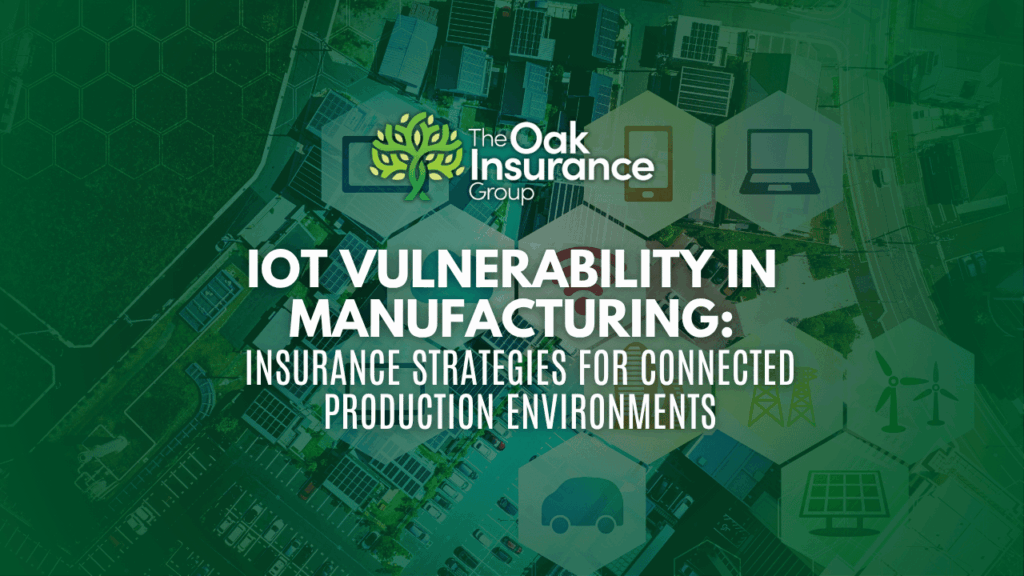
Introduction: Are You Covered Against Digital Manufacturing Risks?
Are your current insurance policies built to protect a connected factory?
Would your coverage actually pay out if a cyberattack brought your production line to a halt?
Digital manufacturing systems are more connected, efficient, and intelligent than ever. But with every sensor, cloud dashboard, and smart machine comes a new risk — one that most legacy insurance policies weren’t designed to handle.
This article breaks down the cybersecurity threats facing modern manufacturing, the vulnerabilities most insurers overlook, and the essential insurance coverage manufacturers must have in place to avoid catastrophic losses. You’ll also learn practical steps to reduce your cyber risk exposure and insurance costs.
What Makes Manufacturing Systems So Vulnerable?
Modern manufacturing systems weren’t designed for today’s cyber threats. Many connected machines and networks were built with productivity in mind — not security.
Key vulnerabilities include:
- Weak communication protocols such as Modbus, which lack encryption or authentication
- Legacy systems still in operation despite being unsupported and unpatched
- Human-machine interfaces that offer critical control without strong access controls
- Enterprise and SCADA systems connected to cloud infrastructure and exposed to external threats
When attackers exploit these weaknesses, the result can be significant production downtime, data theft, or even physical damage.
The Real Cyber Threats Manufacturers Face Today
Manufacturing is now one of the top targets for cybercriminals. The nature of production — where downtime directly impacts revenue — makes this sector uniquely vulnerable.
Common threats include:
- Ransomware attacks that halt operations and demand large payments to restore systems
- Advanced persistent threats designed to steal intellectual property or disrupt operations over time
- Supply chain breaches where attackers compromise vendors or service providers to infiltrate multiple organizations
These threats often go beyond IT disruptions. They directly affect physical processes, worker safety, customer obligations, and brand reputation.
What Happens When Traditional Insurance Isn’t Enough?
Many manufacturers assume their existing property or liability insurance will cover cyber-related losses. That’s often not the case.
Here’s what traditional policies typically miss:
- Business interruption tied specifically to cyber incidents, especially partial system outages
- Physical damage triggered by cyber actions, such as overheating machinery caused by malicious code
- Third-party claims resulting from data loss or production failures
Modern manufacturing environments demand integrated insurance strategies — policies that reflect the interconnected nature of cyber, physical, and liability risks.
What Does Cyber Insurance Actually Cover?
Cyber insurance is specifically designed to fill the gaps left by conventional policies. It offers financial protection and support during and after a cyber event.
Coverage often includes:
- Compensation for income loss during production disruptions
- Costs associated with ransomware payments and professional negotiations
- Recovery assistance for operational technology (OT) environments, including SCADA systems
- Coverage for theft or misuse of intellectual property such as proprietary designs and manufacturing data
These policies must be tailored to the realities of industrial environments, where recovery can take days or even weeks.
The 4 Major Risk Areas That Insurance Must Address
To be truly effective, insurance coverage must address all the ways digital risks affect manufacturing operations.
Those areas are:
- Product liability for failures caused by software bugs or faulty IoT components
- Property damage from automated equipment errors, such as robotic arms operating out of control
- Worker safety risks related to improperly configured connected systems
- Cyber incidents ranging from malware infections to unauthorized access through unsecured devices
Each risk category should be clearly defined in your coverage — ideally supported by a broker familiar with industrial operations.
Risk Management Best Practices to Reduce Your Premiums
Insurers evaluate your cyber posture before issuing a policy or determining your rate. Proactive security measures can reduce your exposure and demonstrate operational maturity.
Effective risk management strategies include:
- Segmenting your production networks from IT environments to prevent lateral movement
- Enforcing strict access controls, including multi-factor authentication and device-level approvals
- Retiring unsupported equipment and applying consistent security standards to all new device purchases
- Hardening control systems by removing unnecessary services and reducing the attack surface
- Monitoring OT environments using specialized tools that can detect suspicious activity
- Requiring suppliers and partners to meet cybersecurity standards and disclose breaches promptly
These practices help reduce both the likelihood and the impact of an incident — and they also help you secure more favorable insurance terms.
Final Takeaways and Action Steps
At the end of the day, most manufacturers know digital transformation introduces new risk. What’s often less clear is whether existing insurance coverage accounts for those risks — or if key vulnerabilities are being overlooked entirely.
Now that you understand the types of attacks that commonly target manufacturers, how traditional insurance can fall short, and which strategies reduce exposure, the next step is to evaluate your current risk profile and policy coverage.
Start by performing a thorough risk assessment of your IT and OT environments. From there, work with a specialist who understands the unique challenges of digital manufacturing to build an integrated insurance strategy. Align your internal controls and supplier relationships around that framework, and update your risk posture regularly as systems and threats evolve.
Cyber insurance won’t eliminate risk. But with the right coverage and a strong security foundation, manufacturers can navigate uncertainty with confidence — and protect the digital capabilities that drive innovation and growth.

